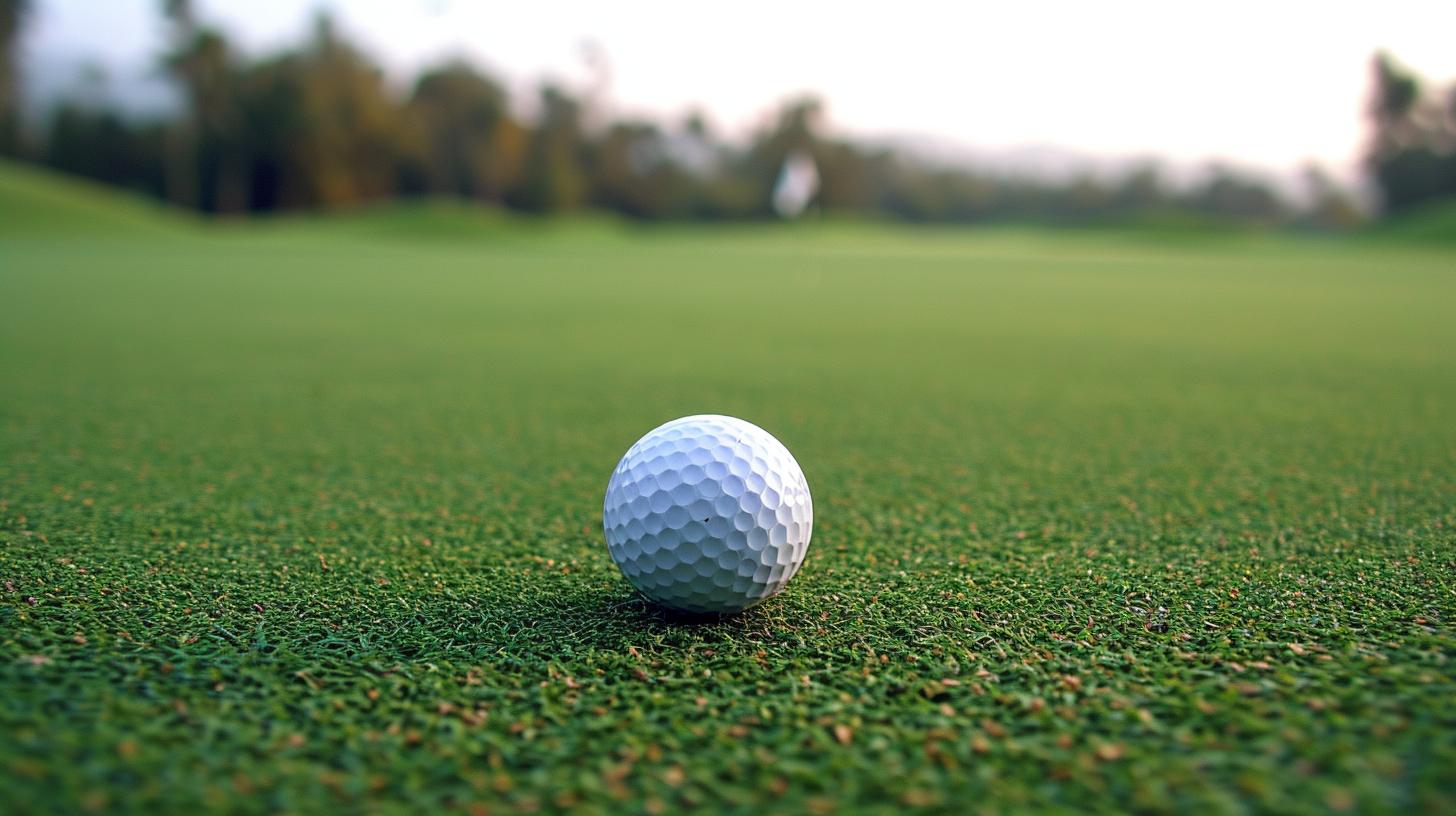
Golf balls have come a long way from their smooth beginnings to the dimpled design we see today. But have you ever wondered how many dimples are on a golf ball? The answer might surprise you. In this article, we will explore the history of golf balls, the science behind dimples, and debunk the myth surrounding the counting of dimples.
The evolution of golf balls has been a fascinating journey, from handcrafted smooth wooden balls used in the 14th century to today’s modern dimpled designs. The introduction of dimples revolutionized the game, significantly impacting performance and distance. But just how important are these little indentations on a golf ball?
As we delve into the science behind dimples, we will uncover how they affect aerodynamics and ultimately improve the ball’s flight. We will also explore the different types and configurations of dimples and how advancements in technology have continuously shaped their evolution. Join us as we unravel this intriguing aspect of golf ball design and technology.
The Science Behind Dimples
The dimples on a golf ball aren’t just for aesthetic purposes. They actually play a crucial role in the aerodynamics of the ball’s flight. When golf balls were first used, they were smooth, and players quickly realized that their flight was not as consistent or accurate. This led to the introduction of dimples on the surface of the ball, which revolutionized its performance.
The science behind the dimples lies in their ability to reduce drag and increase lift as the ball travels through the air. The dimpled surface creates a thin layer of turbulent air around the ball, which helps it move more smoothly through the air. In addition, this turbulent air layer reduces the wake behind the ball, resulting in less drag and therefore greater distance when hit.
To further understand how important dimples are in golf balls’ aerodynamics, let’s break down some key points:
- Dimples create a thin turbulent boundary layer of air around the ball.
- This reduces drag and allows for a more consistent and stable flight.
- The presence of dimples also increases lift, helping the ball achieve greater distances.
- Different dimple patterns can affect these aerodynamic properties, leading to variations in performance across different golf balls.
Counting Dimples
Many golf enthusiasts have wondered about the exact number of dimples on a golf ball. It is a common misconception that all golf balls have the same number of dimples, but in reality, this is not the case. The standard number of dimples on a golf ball ranges from 300 to 500. Manufacturers have experimented with different dimple patterns and configurations, leading to variations in the number of dimples on a golf ball.
The reason behind having dimples on a golf ball is to improve its aerodynamics and flight performance. The presence of dimples reduces drag and allows the ball to travel farther compared to a smooth ball. The science behind this lies in how the airflow around the ball is affected by the dimples, creating a thin turbulent boundary layer which results in less drag.
In order to determine how many dimples are on a specific type of golf ball, one can simply count them manually or look up the information provided by the manufacturer. However, it’s important to note that while there are standards for the number of dimples on golf balls, variations exist due to different designs and technologies used by manufacturers.
The Evolution of Dimple Patterns
When it comes to the evolution of dimple patterns on golf balls, there have been significant changes over time. The earliest golf balls were smooth and made from wood, which provided very little distance when hit. However, as the game of golf evolved, so did the design of the golf ball.
In the late 1800s, golf balls began to feature small indentations or “dimples” that were hand-carved into the surface. This innovation greatly improved the aerodynamics of the ball and allowed it to travel farther when struck.
The Introduction of Machine-Made Dimples
In the early 20th century, machine-made dimples were introduced, allowing for more precise and consistent patterns on golf balls. This development led to a wide variety of dimple designs being tested and employed by manufacturers in an effort to optimize performance. Different patterns, sizes, depths, and configurations were all experimented with in order to find the most aerodynamically efficient design.
Modern Dimple Patterns
Today, modern golf balls are manufactured with sophisticated technology that allows for highly engineered dimple patterns. Manufacturers use advanced equipment to create precise and uniform dimples on each ball. Over time, these patterns have become more complex and intricate as companies strive to produce golf balls that provide maximum distance, control, and accuracy for players of all skill levels.
As technology continues to advance in the world of golf ball manufacturing, it’s likely that we will see even more innovative dimple patterns in the future. With ongoing research and development in materials science and aerodynamics, there is great potential for even further improvements in golf ball performance through evolving dimple designs.
The Standard Number of Dimples
Golf balls are an essential piece of equipment for any golfer, and the number of dimples on a golf ball is a significant factor that affects its performance. The standard number of dimples on a golf ball is not always the same for every type of golf ball. In fact, different brands and models of golf balls may have varying numbers of dimples.
Variances in Dimple Counts
It is a common misconception that all golf balls have the same number of dimples. However, this is not the case. The typical number of dimples on a golf ball can range anywhere from 300 to 500. This discrepancy in dimple count can have a significant impact on the aerodynamics and performance of the ball.
Impact on Performance
The number of dimples on a golf ball affects its flight characteristics, including trajectory, distance, and spin. Generally, golf balls with more dimples tend to produce lower ball flights with less spin, while those with fewer dimples tend to generate higher ball flights with more spin. Therefore, it is essential for golfers to understand how the number of dimples on a ball can influence their game before selecting which type of golf ball to use.
Factors Affecting Dimple Count
Several factors influence the decision-making process when determining how many dimples will be present on a particular type o folf call: including design goals such as distance or control; advancements in manufacturing technology; and even marketing strategies. Golf ball manufacturers carefully consider these factors when determining the optimal number of dimples for each specific model they produce.
Effects of Dimple Depth
The depth of dimples on a golf ball may not be something that the average golfer thinks about, but it has a significant impact on the performance of the ball. Dimple depth affects the aerodynamics of the ball, which in turn affects its flight and distance. Understanding how dimple depth impacts performance can help golfers make more informed decisions when choosing a ball for their game.
The depth of dimples on a golf ball determines how much air is trapped and how it flows around the ball as it flies through the air. This airflow affects the lift and drag forces acting on the ball, which ultimately determine its trajectory and distance.
Generally, deeper dimples create more turbulent airflow, which reduces drag and allows the ball to travel farther. However, if the dimples are too deep, they can also cause too much turbulent flow, leading to decreased lift and stability.
Research and testing have shown that optimal dimple depth can vary based on factors such as clubhead speed, angle of attack, and even environmental conditions like temperature and humidity. Golf ball manufacturers carefully design dimple patterns and depths to maximize performance under a range of conditions, taking into account both distance and accuracy.
In recent years, advances in technology have allowed manufacturers to fine-tune dimple depth to even greater levels of precision. Computer simulations and wind tunnel testing are now used to analyze how different dimple configurations perform in various conditions. As a result, golfers now have access to balls with a wider range of dimple depths than ever before, allowing them to find a ball that best suits their individual swing characteristics.
| Aspect | Impact |
|---|---|
| Aerodynamics | Determines trajectory and distance |
| Optimal Depth | Can vary based on factors such as clubhead speed and angle of attack |
| Advances in Technology | Allowed for greater precision in designing dimple depths |
Dimple Configurations
Dimples on golf balls are not all the same. Different golf ball manufacturers use different dimple configurations to achieve specific performance characteristics. Understanding the various types of dimple configurations can help golfers make informed decisions when choosing which golf ball is best suited for their individual game.
There are several common dimple configurations used in golf balls, including:
- Two-piece Dimple Design: This design features larger and fewer dimples, typically around 300-400, and is commonly found in distance-focused golf balls. The larger dimples reduce drag and enhance distance by promoting a higher launch angle.
- Multi-layer Dimple Design: Utilizing different sizes of dimples, this configuration aims to optimize aerodynamics at different velocities. Typically found in high-performance or tour-level golf balls, the multi-layer design provides a balance between distance and control.
- Shallow Dimple Design: Comprising shallow but numerous dimples, this configuration is often used in softer feel golf balls. The shallower dimples reduce backspin and promote a lower trajectory, making it ideal for players seeking enhanced control on approach shots and around the greens.
Understanding these different types of dimple configurations can help golfers select a ball that aligns with their playing style and preferences. While there is no one-size-fits-all answer to the question “how many dimples in a golf ball,” knowing the various configurations can lead to an informed decision when choosing the right equipment for your game.
The Future of Golf Ball Technology
In conclusion, the future of golf ball technology holds exciting possibilities for further advancements in dimple design. As the evolution of golf balls has shown us, from smooth surfaces to dimpled ones, and from simple designs to complex configurations, it is evident that there is still much room for innovation in this area. With a deeper understanding of the science behind dimples and their effects on aerodynamics, manufacturers are constantly striving to create more efficient and high-performing golf balls.
One of the key questions that golf enthusiasts have pondered over the years is “how many dimples in a golf ball?” While there is no standard answer due to variations in designs and brands, it is clear that the number of dimples plays a significant role in the performance of a golf ball. As new materials and manufacturing techniques continue to emerge, we can expect to see even more diverse and intricate patterns in the future.
Furthermore, with advancements in technology, such as computer-aided design and 3D printing, we may witness custom-tailored dimple configurations designed for specific players or playing conditions. The potential for personalized golf balls tailored to individual swing characteristics and preferences could revolutionize the game even further.
In essence, while we may not know exactly how many dimples will grace future golf balls, it is safe to say that the quest for enhanced aerodynamic efficiency will continue to drive innovation in dimple design for years to come.






